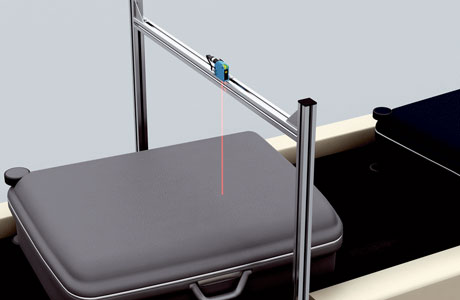Key Takeaway
Background suppression allows a photoelectric sensor to differentiate between an object and its background. It works by measuring the angle between emitted and reflected light.
If the reflected light comes from the target object, the sensor activates. If it comes from the background, the sensor ignores it. This feature ensures accurate detection in complex environments with varying backgrounds.
Understanding the Principle of Background Suppression
At its core, background suppression works by controlling how far the sensor “sees.” Traditional sensors can sometimes be confused by objects that are in the background, leading to false detections. With background suppression, the sensor’s detection zone is set to a specific range, so it only detects objects within that range while ignoring anything further away.
Think of it like focusing a camera. If you’re trying to capture an object, you want everything else in the background to blur out. That’s essentially what background suppression does—ensuring that only the intended object triggers the sensor while ignoring irrelevant elements.This precision is achieved through advanced optics and sensor technology, making it ideal for environments where accuracy is critical, such as conveyor belts or manufacturing lines.

How Background Suppression Enhances Detection Accuracy
When you’re dealing with reflective surfaces or challenging environments, traditional sensors often struggle to distinguish between the object you want to detect and the background. Background suppression technology changes this by precisely focusing on the object of interest, reducing errors caused by reflective surfaces or nearby objects. It’s like having a sensor that sees only what matters, ignoring distractions in its path.
This technology is crucial in environments where the object and the background may share similar properties, such as dark objects against dark backgrounds. For engineers, this means fewer false positives and less downtime, ensuring production runs smoothly. It’s all about accuracy and reliability, two core factors every industrial expert needs.
Applications That Benefit from Background Suppression Technology
Background suppression technology shines in areas that require precision in cluttered or fast-moving environments. Think about automated warehouses, where various items move at high speeds, or material handling systems that involve complex arrangements of objects. This technology ensures that only the items on the conveyor or line are detected, ignoring irrelevant background materials.
In packaging lines, for example, this is incredibly valuable. Without background suppression, a sensor might mistakenly detect the conveyor belt or adjacent items. The result? Accurate object detection in tight spaces with minimal error rates. It’s a game-changer for engineers working in fast-paced, high-demand industries where precision is non-negotiable.
Comparing Background Suppression with Standard Photoelectric Sensors
Standard photoelectric sensors detect objects based on the light they reflect, making them vulnerable to mistakes when the background has similar reflective properties. But with background suppression sensors, detection is based on distance, not just reflection. This eliminates issues with backgrounds that might confuse standard sensors, making the technology a more reliable choice for industrial applications.
Imagine trying to detect a shiny metal object near a reflective surface. A standard sensor might struggle, but a background suppression sensor is calibrated to ignore the reflective background entirely. This leads to fewer detection errors and a more stable operation, which is exactly what engineers need when working with complex machinery or in sensitive environments.
Troubleshooting Background Suppression Issues
Even though background suppression technology is advanced, occasional issues can arise. Misalignment is one of the most common causes of failure. If the sensor is not aligned correctly, it might miss the object or detect it prematurely. In such cases, adjusting the sensor’s alignment and ensuring the object is within the correct detection range is essential to get it working properly again.
Another common problem is sensor contamination, which can happen due to dust, dirt, or oil on the sensor lens. Regular maintenance, such as cleaning the sensor lens and checking for any debris, ensures it functions optimally. When all else fails, reviewing the sensor settings or contacting support might be the best option to prevent further downtime.
Conclusion
Background suppression in photoelectric sensors is a pivotal technology for improving detection accuracy in industrial applications. By filtering out background interference, it reduces false readings and enhances overall operational efficiency. This leads to fewer disruptions, increased machine uptime, and improved production flow, making it a valuable asset for industries aiming to optimize performance and stay competitive in an increasingly automated landscape.
